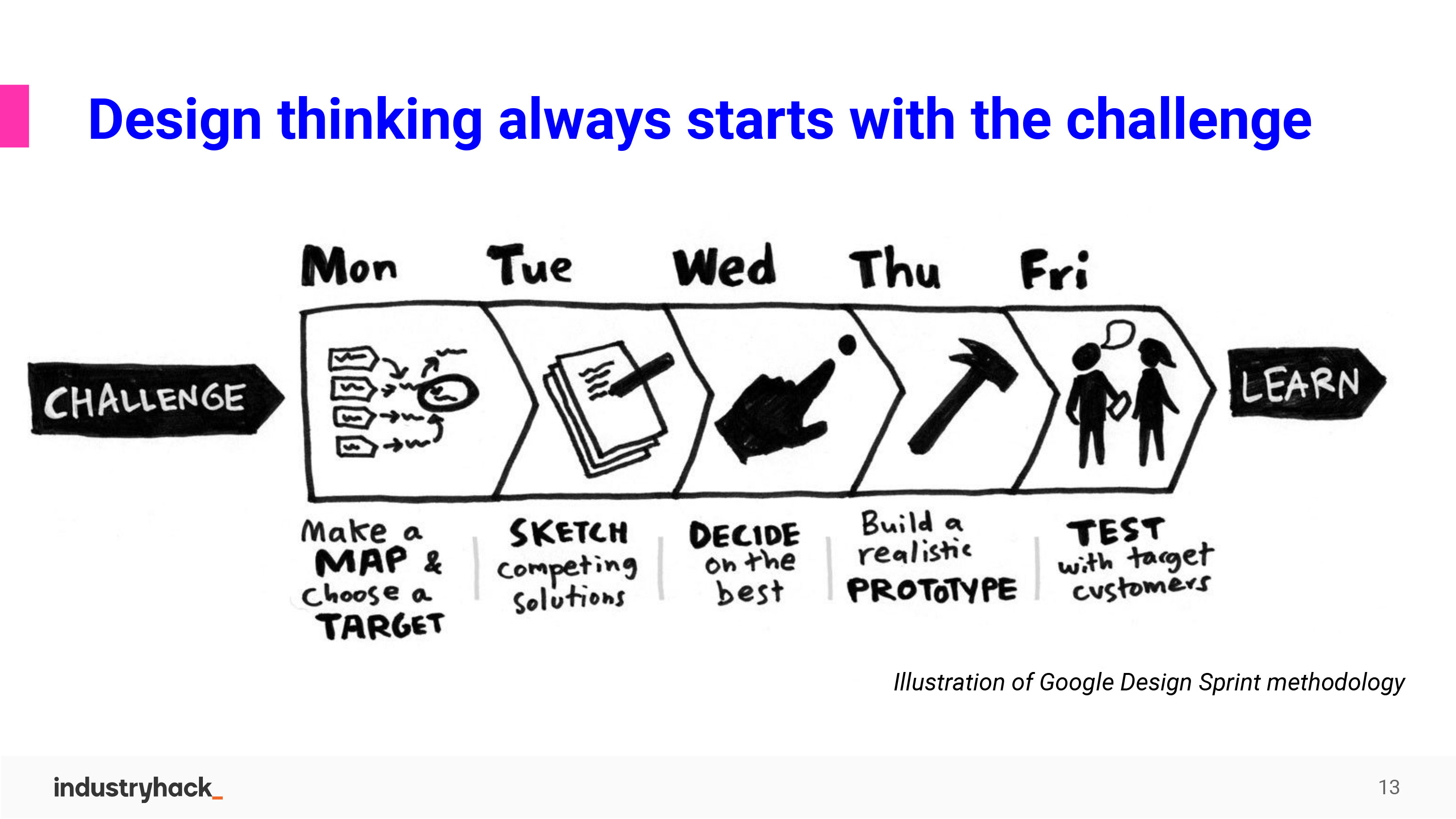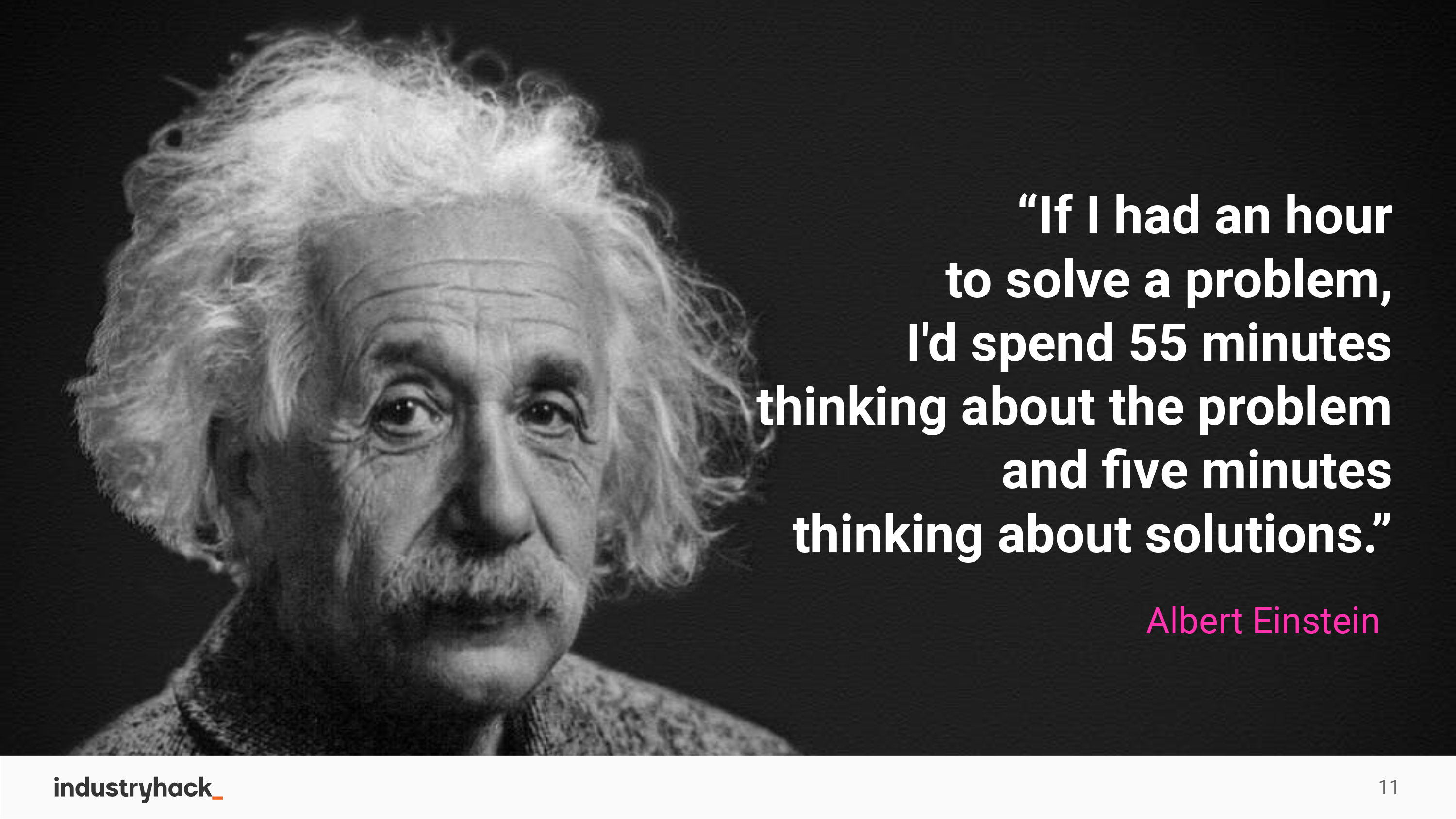WEBINAR / How to create an impactful, efficient, engaging challenge?
Check our insights and get to know our hands-on framework!
DigiEduHack is a one-of-its-kind hackathon: we value collaboration, co-creation and social impact rather than competition. For this reason, your challenge should reflect the importance of these values. To help you craft the most efficient, engaging and impactful challenge, we collaborated with Industryhack_ to create a framework dedicated to DigiEduHack hosts
This article is the transcript of the webinar that took place on 18.8.2020. You can find the recording here.
Think about your participants
Have you ever wondered why participants would join your DigiEduHack event? What was their deep motivation? As a host, you want your participants to thrive during your event: it is important that you keep aiming to create the perfect environment that would take into account the participants interests and create fertile ground for collaboration and co-creation to happen.
Once you've processed this, it’s easier to find the people who should or would like to join and invite them to take part. Your role as a host is to entirely focus on the challenge, not on the solution. The more you give free hands to the participants on their solutions, the more creative the solutions will be. When the intentions are right and the collaboration is facilitated well, it’s possible to start a longer-term relation, potentially a journey together.
The preparatory phase that precedes the actual crafting of your challenge will also help you to manage everyone’s expectations -from co-hosts to core crew to participants, and will also help you to allocate the right resources for the after-hackathon phase.
The importance of the challenge
Why do we talk about challenges? Why don’t we just start creating something cool or invite people to share any good ideas they may have? Well, if we would, we would probably end up with a bunch of nice thoughts and ideas, maybe even some concepts and suggestions, but most of them would end up going nowhere. They would be just nice ideas that someone could maybe implement. Or not.
The best ideas are those that actually solve a problem. That’s why it’s important to think about the problems we want to solve first and, only then, start coming up with ideas.
It’s actually not that hard to come up with a bunch of ideas, just do a brainstorming session, and there you go. Then, you’re gonna have loads and loads of ideas. In order to get the best ideas, those of value that can and will be implemented, you have to start by crafting a relevant challenge. And only after this, you do the brainstorming.
And that’s what these hackathons are all about. Your job as a host is to choose and craft a challenge, let the participants learn about it and then work on their ideas to solve it. A challenge doesn’t have to be a very specific problem: it’s more about figuring out what you want to achieve.
For example, if we focus on building a new and better washing machine and keep improving the way it works and which functionalities it has and how it looks like, we may forget the actual problem or the actual need that the user has: was it to have a machine to do the washing at home so they don’t have to do it manually? Or was it just to get clean clothing? If the original need is the latter, it might be a better solution for the user to take their clothing to a dry cleaner instead of owning a washing machine. Ask the user!
What do you want to achieve?
You will be a successful host running a successful event if you just name your goals and wishes and let the participants dig deeper into the problem and search for the possible ways to solve it. We don’t always know the best solutions by ourselves: if we go back to our example, it could be a newly designed washing machine or it could be something totally different. Focus on what you want to achieve: clean clothes, in our example. This is actually just like a design thinking process: first, you understand the goals, need and challenges, then you use different design methods or prototyping tools to create solutions.

The Google Design Sprint methodology.
This image illustrates Google Design Sprint methodology, which is pretty similar to the path that hackathons follow. The challenge is named beforehand, and during the process, the participants learn more about it. This is also the principle that DigiEduHack follows. To make this all a bit more concrete, we have created two example host stories for you.
Meet Laura and Mark
Meet Laura. Laura works in a Swedish university as a partnership coordinator for the faculty of education. She would like to maybe organise a DigiEduHack event this year. She has wide networks and connections to city officials, companies, and schools. In addition, the faculty of education has an ongoing collaboration programme together with the science and tech departments. For Laura, all the DigiEduHack general themes are interesting, but after some deeper thinking, she settles on "emerging technologies for education". Laura registers the university as a host on digieduhack.com and starts to think about finding the perfect challenge around the theme. She wonders what is the actual problem she wants to solve.
Then we have Mark. Mark is working as a teacher in Germany and is always trying to find new ways to activate and inspire his students, especially in the tech classes. He has connections to an education-related foundation, and they have had many conversations about possible cooperation projects. The foundation has a budget for a project, and Mark is particularly interested in how to inspire students with new technology, but neither he nor the foundation have any connections. So Mark has difficulties in finding concrete ways on how the cooperation project could be done. Mark hears about DigiEduHack from a colleague, and the "emerging technology for education" theme sounds exactly what Mark has been wondering about. He decides to enrol as a host together with the foundation. Could co-creation help in getting concrete ways to inspire school kids with the latest technology? Or could DigiEduHack be the way to find new partners for the school?
Get a starting point
Just like Laura and Mark, you might wonder what you should start with. You might have already a theme or you might even have a problem in mind you would like to solve. Use the 8 proposed themes on digieduhack.com/en/thems to get a "safe" starting point. Bear in mind that the challenge can be also rooted to your strategy, your current interests, or the developing initiatives you are part of. Your starting point can also be something that you are not familiar with. Do you want to learn more about something or find out different ways of doing something?
Work on your challenge
When you have your theme figured out, it’s time to start working on your challenge. We recommend a process that is divided into two phases. The first phase is called the challenge building. In this phase, you work around your topic, ideate, broaden your thinking, and list all potentially relevant topics. Just think outside of the box. And in this phase, quantity is better than quality: try to get your ideas flowing. The second phase is called the description phase. Here you will use DigiEduHack event pages to create the challenge page for your hackathon.
Phase 1: the challenge building
In this phase, it is all about getting your ideas flowing and creating material for phase 2: the challenge description. To help you, we created the challenge building canvas. The canvas will help you to build an impactful, understandable, and relevant challenge (we even created an example in the canvas, in pink). Remember that your challenge should also call for a hands-on approach, as well as allow diverse skills and ideas. Get the challenge building canvas here.
The recommended working order is to start from part four, so on the upper left corner -"Impact"- and then move clockwise. "Impact" is about what long-term effects are induced by the solutions you wish to collect. This may already be described in the goals of the initiative that you are part of. Or this impact can also be taken straight from the DigiEduHack goals and themes as well.
Then we move to "Outcome". Here you can describe the concrete changes you want to achieve through the solutions created. The outcome should be measurable: either qualitatively or quantitatively
Let's go to the lower right part of the canvas, to the "Output" field. Here you will describe what you are expecting to achieve, or what kind of results should be created. You can think about possible solutions that could help achieve the goals. Don’t design the solutions: think about some minimum requirements, such as technical limitations that should be considered or taken care of. Or maybe you have already experimented or created some solutions, and you know what would not work. If we go back to our pink example, think about what could help the 12 children learn how to read. And 20 hours of teaching and 25 different assignments is one really concrete way, so how to make that outcome happen? Those could be the outputs of this co-creation process. Note that we don’t yet say what kinds of assignments they are or what type of teaching you offer. You just merely list the expectation of the output.
Lastly, we go to "Input". Here, think about the resources you have available. There are two types of resources that we are talking about here. First, your input is aimed at the participants of your event: resources, expertise, data,... Then, on the other hand, we have what the participants might need to make their solutions be implemented. Here it's a bit of guessing and anticipation: it could be certain technologies or expertise or some existing components. If we go back to our pink example: we have one concrete resource, which would be mapping the available teachers for the project.
Let's go back to Laura and Mark for a bit. Laura has always wanted to have a collaboration between those who make science happen and those that take plans to action. And in this scenario, the end-collaboration can be considered as an impact with different parties as city officials and schools on one hand and universities and companies on the other. This is "Impact", in the upper left corner. Moving on to the upper right corner, "Outcome", the goals for this collaboration would be creating new, more engaging education methods, utilising emerging technology. Continuing to "Output", Laura would like to see those technologies that are currently deployed in her university be utilised. Lastly, "Input": Laura already has identified some key persons from her network who could mentor participants. Laura also has access to the newest education strategy of their city.
What about Mark? Starting again from the upper left corner, Mark wants to inspire his students with emerging technologies and get them interested in tech and science. Enhancing grades, getting more students to apply to university could be considered also as an impact. Moving right, as an "Outcome", there could be deeper cooperation between technology companies and schools to co-create inspiring solutions based on emerging technologies. The solutions should be inspiring students about science and technology and should be engaging for youth as well as be usable and affordable! Mark and the foundation he collaborates with would like to find new companies to partner with. Inspiring solutions and ideas coming from students are also welcome. Mark has interested his colleagues and his own students who could mentor participants. All of these could or can be considered as input on the lower left.
Phase 2: challenge description
The challenge description is the first contact between potential participants and your challenge. The challenge description acts both as an advertisement and an information outlet for the challenge. The description should be both interesting and appealing to target participants from different backgrounds, skillsets, and viewpoints. You should try to find the perfect balance between giving too little and just enough information about your challenge because giving too precise information will guide the applicants in one direction and might mean that everyone would work on a very similar idea. On the other hand, a too vague idea will not give applicants enough information to make a decision
A good challenge description is motivating, inspiring, and thought-provoking. Also remember that it acts as an advertisement of the challenge and the hackathon, so a good challenge description also gives enough information about the challenge and the context to apply or join, but it also leaves room for different kinds of interpretations and approaches. A good challenge description uses questions as a way to describe the challenge and its dimension to welcome creative thinking without being too detailed or too broad. Steer away from suggesting possible solutions and leave that for the participants.
Ready? login to your event pages on digieduchak.com. Go to "host website", and choose "Challenge pages". Use the challenge building canvas as a guideline to fill the page. We recommend you to start with the "2. Challenge description", then fill in the "1. Challenge introduction". Again, use the challenge building canvas as a guide. Then, come up with a teaser and topic. The topic should be inspiring and short. This can be also tedious, but very well worth it. In part three, "images and videos", you can add any relevant videos or images about your challenge. Lastly in part four, "resources", you may want to add relevant resources about your challenge, like datasets, documents, or other files. You can also write small descriptions about the resources to let users get an introduction before they download anything.
Always keep in mind that all these above elements can inspire participants to apply! For example, the resources could be one big chunk of motivation and incentive to take part in your event!



